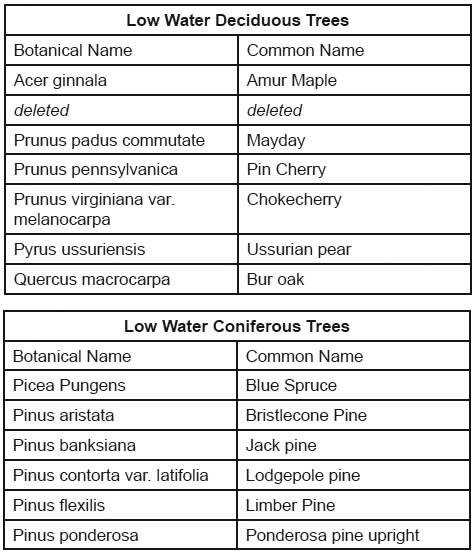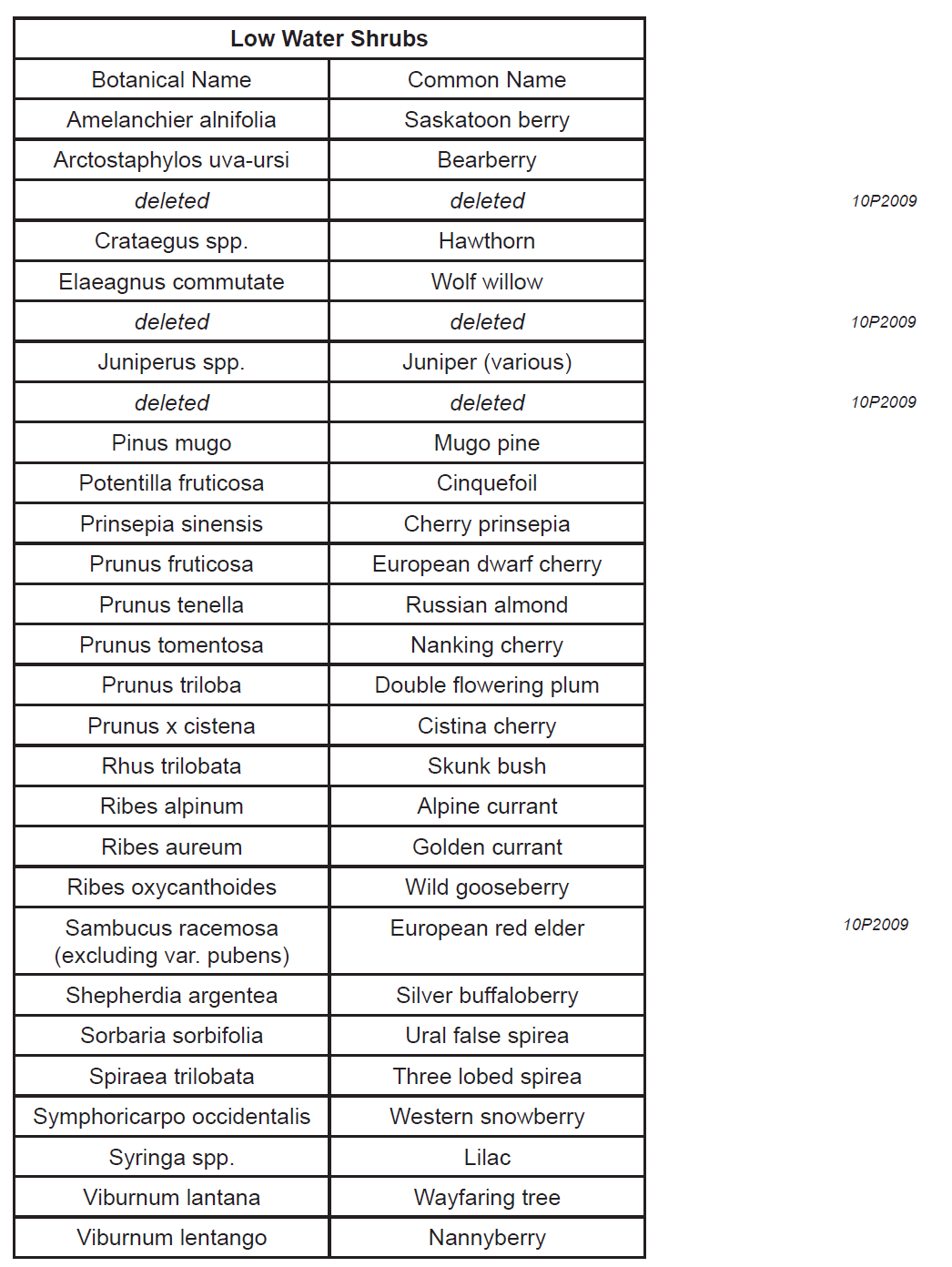Bylaw test
Top of page


PART 11: CENTRE CITY DISTRICTS
Division 1: General Rules for Centre City Multi-Residential High Rise Land Use Districts
Projections Into Setback Areas
1099
1
Unless otherwise referenced in this section, buildings must not be located in any setback area.
2
Portions of a building located above the surface of the ground may project into a setback area only in accordance with the rules contained in this section.
3
Portions of a building below the surface of the ground may extend without any limits into a setback area.
5
Eaves may project a maximum of 0.6 metres, and window wells may project a maximum of 0.8 metres, into any setback area.
6
Landings not exceeding 2.5 square metres, ramps other than wheelchair ramps and unenclosed stairs may project into any setback area.
7
Signs may be located in any setback area, and where so located must be in accordance with Part 3, Division 5.
General Landscaped Area Rules
1100
1
Landscaped areas must be provided in accordance with a landscape plan approved by a Development Authority.
2
A landscape plan for the entire development must be submitted as part of each development permit application, where changes are proposed to the building or parcel and must show at least the following:
c
the layout of berms, open space systems, pedestrian circulation, retaining walls, screening, slope of the land, soft surfaced landscaped areas and hard surfaced landscaped areas;
d
the types, species, sizes and numbers of plant material and the types of hard surfaced landscaped areas;
f
for landscaped areas with the Enhanced Landscaping Option, the following additional information must be provided:
g
for landscaped areas with the Low Water Landscaping Option details of the low water irrigation system, including extent of water delivery; and
h
for landscaped areas with a building below, the following additional information must be provided:
3
The landscaped areas shown on the landscape plan approved by the Development Authority must be maintained on the parcel for so long as the development exists.
4
All soft surfaced landscaped areas must be irrigated by an underground irrigation system, unless otherwise provided by a low water irrigation system.
5
Unless otherwise referenced in subsections (6) and (7), all areas of a parcel, except for those portions specifically required for motor vehicle access, motor vehicle parking stalls, loading stalls, garbage facilities, or any purpose allowed by the Development Authority, must be a landscaped area.
6
All setback areas adjacent to a street or another parcel, except for those portions specifically required for motor vehicle access, must be a landscaped area.
7
All setback areas adjacent to a lane, except for those portions specifically required for motor vehicle access, motor vehicle parking stalls, loading stalls or garbage facilities must be a landscaped area.
Specific Rules for Landscaped Areas
1101
1
Any part of the parcel used for motor vehicle access, motor vehicle parking stalls, loading stalls and garbage or recycling facilities must not be included in the calculation of a landscaped area.
3
For landscaped areas above grade, a minimum of 30.0 per cent of the area must be covered with soft surfaced landscaping.
4
Where a landscaped area above grade is fragmented into isolated spaces, a minimum of 30.0 per cent of each space must be covered with soft surfaced landscaping.
5
Only landscaping provided at grade or between grade and 25 metres above grade may be counted towards the required landscaped area.
Planting Requirements
2
A minimum of 1.0 trees and 2.0 shrubs must be planted for every 45.0 square metres of landscaped area provided.
4
Unless otherwise referenced in section 1104, deciduous trees must have a minimum calliper of 50 millimetres and at least 50.0 per cent of the provided deciduous trees must have a minimum calliper of 75 millimetres at the time of planting.
5
Unless otherwise referenced in section 1104, coniferous trees must have a minimum height of 2.0 metres and at least of 50.0 per cent of the provided coniferous trees must be a minimum of 3.0 metres in height at the time of planting.
7
For landscaped areas with a building below, planting areas must have the following minimum soil depths:
Landscaped Area Reductions — Multi-Residential Development
1103
The minimum landscaped area for Multi-Residential Development may be reduced by the two options as referenced in sections 1104 and 1105 individually or in combination, to a total available reduction of 6.0 per cent of the area of a parcel.
Enhanced Landscaping Option
1104
For the Enhanced Landscaping Option, the required landscaped area may be reduced by 3.0 per cent of the area of the parcel where:
2
deciduous trees have a minimum calliper of 65 millimetres and at least of 50.0 per cent of the provided deciduous trees must have a minimum calliper of 85 millimetres at the time of planting; and
3
coniferous trees have a minimum height of 3.0 metres and at least 50.0 per cent of the provided coniferous trees must have a minimum height of 4.0 metres at the time of planting.
Low Water Landscaping Option
1105
For the Low Water Landscaping Option, the required landscaped area may be reduced by 3.0 per cent of the area of the parcel where:
d
a maximum of 30.0 per cent of the required landscaped area is planted with sod and the remainder is covered with plantings, mulch or hard surfaces;
Table 5: Low Water Trees


Amenity Space
1106
1
A patio may be located in a setback area between a multi-residential building and a property line shared with a street.
2
Amenity space may be provided as common amenity space, private amenity space or a combination of both.
4
When the private amenity space provided is 5.0 square metres or less per unit, that specific area will be included to satisfy the amenity space requirement.
5
When the private amenity space exceeds 5.0 square metres per unit, only 5.0 square metres per unit must be included to satisfy the amenity space requirement.
c
must have a contiguous area of not less than 50.0 square metres with no dimension less than 6.0 metres;
9
A maximum of 50.0 per cent of the required amenity space may be provided as common amenity space —indoors.
b
must be used in the calculation of the required landscaped area when located below 25.0 metres above grade.
Motor Vehicle Parking Stall Requirements
1107
1
Where a building contains three or more units with shared entrance facilities in a Multi-Residential Development, the minimum motor vehicle parking stall requirement:
2
Where a building contains three or more units with no shared entrance facilities in a Multi-Residential Development, the minimum motor vehicle parking stall requirement:
3
Where a building is a Single Detached Dwelling, a Semi-detached Dwelling or a Duplex Dwelling in a Multi-Residential Development, the minimum motor vehicle parking stall requirement:
Exclusive Use of Bicycle Parking Stalls
1109
Bicycle parking stalls — class 1 provided for Dwelling Units and Live Work Units are for the exclusive use of residents.
Accessory Residential Buildings
3
The maximum height for an Accessory Residential Building when approved as a private garage is 5.0 metres measured from grade.
Objects Prohibited or Restricted
a
be located in an actual front setback area or in an actual side setback area of a corner parcel; and
6
Subsection (5) does not apply to a satellite dish greater than 1.0 metre in diameter when the applicant demonstrates:
Driveway Length and Parking Areas
a
be a minimum of 6.0 metres in length, when measured along the intended direction of travel for vehicles from the back of the public sidewalk or curb; and
a
be a minimum of 0.60 metres in length, when measured along the intended direction of travel for vehicles; and
b
be located between the property line shared with a lane and the vehicular entrance of the private garage.
Uses At Grade
c
not contain motor vehicle parking stalls, loading stalls, garbage facilities or parkade and building venting.
Garbage
1115
Garbage containers and waste material must be stored, prior to collection, inside the main residential building.
Recycling Facilities
1116
Recycling facilities must be provided for every Multi-Residential Development.
Mechanical Screening
1117
Mechanical systems or equipment located outside of a building shall be positioned, camouflaged or screened from view of a public space, or from view of a parcel designated as a residential district, located within 30.0 metres of the equipment, using a line of sight of 1.7 metres above grade.
Visibility Setback
1118
Within a corner visibility triangle, buildings, fences, finished grade of a parcel and vegetation must not be located between 0.75 metres and 4.60 metres above the lowest elevation of the street.
Retaining Walls
1119
1
A retaining wall must be less than 1.2 metres in height when measured from the lowest grade at any point adjacent to the retaining wall to the highest grade retained by the retaining wall.
2
A minimum horizontal separation of 1.0 metres must be maintained between retaining walls on a parcel.
Fences
a
1.2 metres for that portion of the fence extending beyond the foremost portion of all buildings on the parcel;
b
2.0 metres for that portion of the fence that does not extend beyond the foremost portion of all buildings on the parcel; and
c
2.5 metres to the highest point of a gateway provided that the gateway does not exceed more than 2.5 metres in length.
1120.1
Any of the following uses must comply with the rules of the R-CG District that apply to such development:

